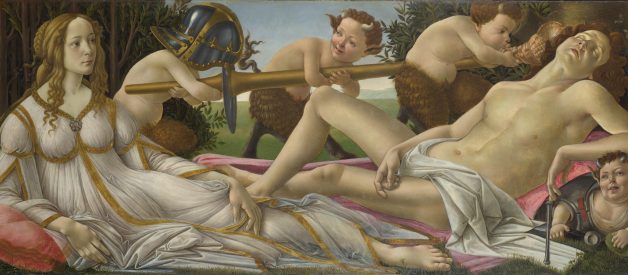An allegory of Love overcoming War? and much else besides
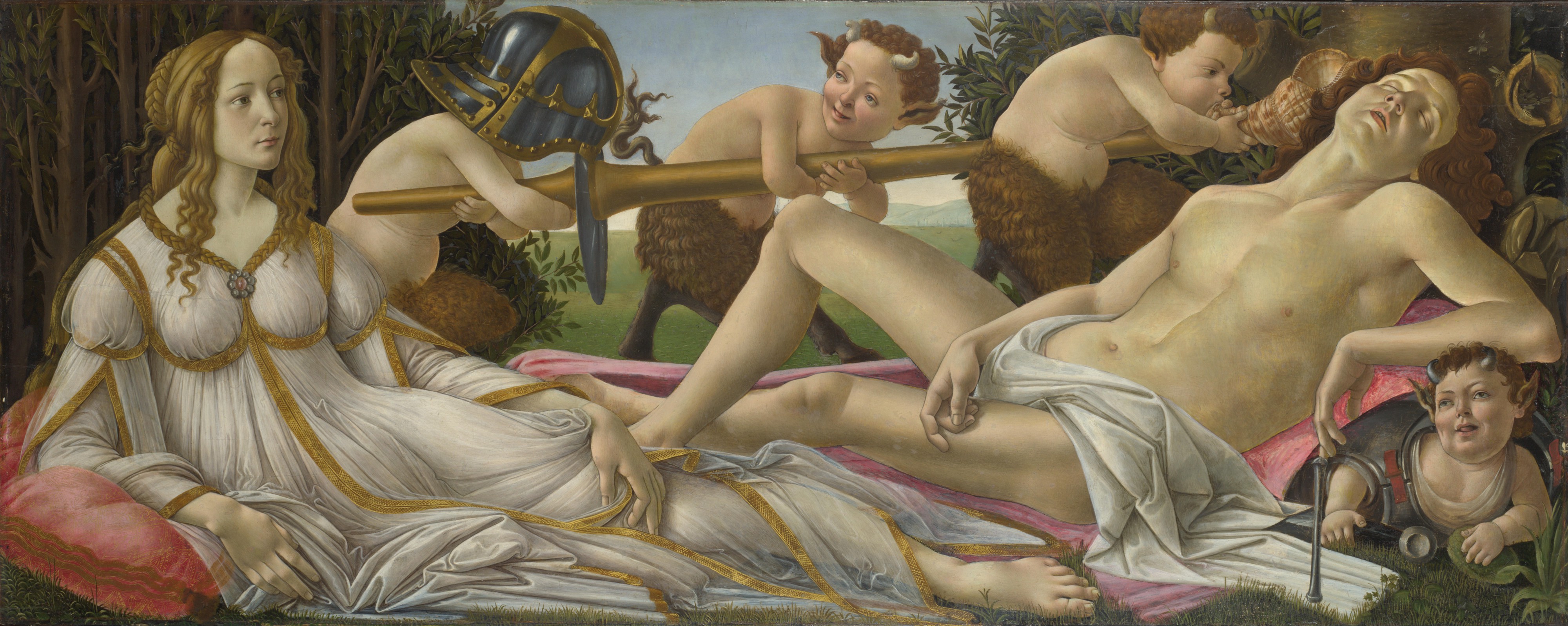 Venus and Mars (c 1485) by Sandro Botticelli. Tempera and oil on poplar panel, 69 cm x 173 cm. National Gallery, London. Source Wikimedia Commons
Venus and Mars (c 1485) by Sandro Botticelli. Tempera and oil on poplar panel, 69 cm x 173 cm. National Gallery, London. Source Wikimedia Commons
What does the painting show? A woman and a man lying in a grassy glade, surrounded by trees and shrubbery. She is sat up with her elbow cushioned by a red pillow; he has fallen asleep with his head lolling on his shoulder. Behind them, a group of baby satyrs ? half-human and half-goat creatures ? are playing with the man?s weapons.
She is Venus, the goddess of love and fertility. He is Mars, the god of war. When read as an allegory, the message is of Love conquering Strife. His brutal and aggressive nature is subdued by Love?s grace. To further prove his disarmament, his weapons laid aside are being carried away by the impish satyrs.
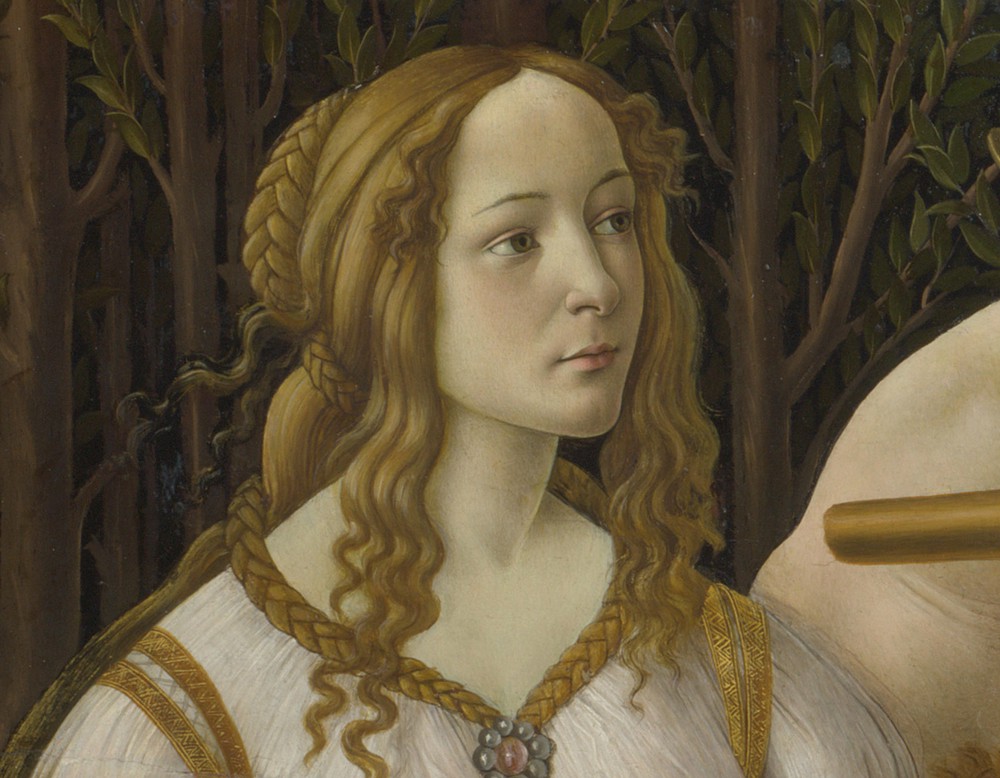 Detail of ?Venus and Mars? (c 1485) by Sandro Botticelli. Tempera and oil on poplar panel, 69 cm x 173 cm. National Gallery, London. Source Wikimedia Commons
Detail of ?Venus and Mars? (c 1485) by Sandro Botticelli. Tempera and oil on poplar panel, 69 cm x 173 cm. National Gallery, London. Source Wikimedia Commons
What I like about this painting is the very directness of the scene. The artist, Sandro Botticelli (1445?1510), has managed to fill an extraordinary amount of detail into the composition without stifling the aesthetic balance. This has the effect of bringing the scene close-up to the viewer whilst maintaining a sense of clarity. The colour tones are light and simple, and each figure is painted with a degree of vividness that seems to illuminate their very presence.
The unusual rectangular shape of the painting suggests it was made as part of the decoration for a room in a Florentine townhouse, possibly for the backboard of a bench or a chest. As such, it is likely that Botticelli was commissioned to make the work for a client.
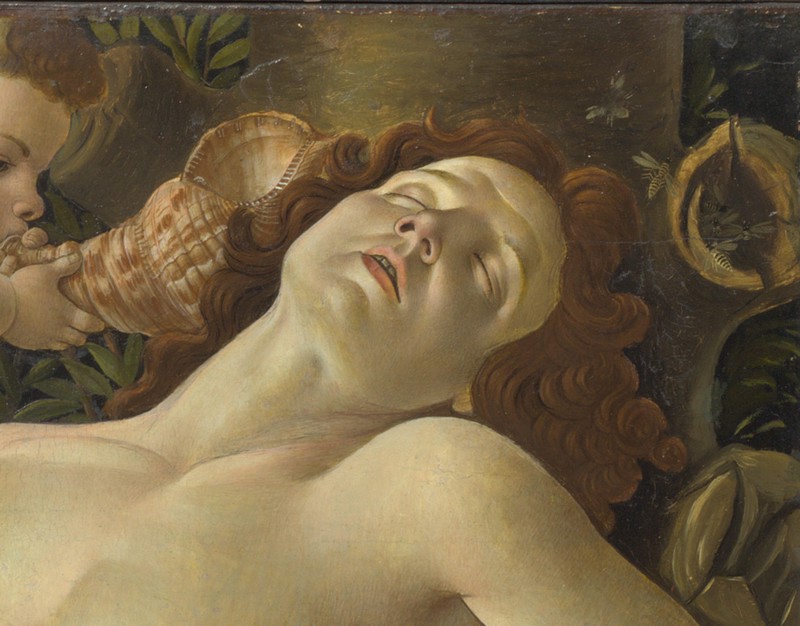 Detail of ?Venus and Mars? (c 1485) by Sandro Botticelli. Tempera and oil on poplar panel, 69 cm x 173 cm. National Gallery, London. Source Wikimedia Commons
Detail of ?Venus and Mars? (c 1485) by Sandro Botticelli. Tempera and oil on poplar panel, 69 cm x 173 cm. National Gallery, London. Source Wikimedia Commons
Close attention to Mars?s head reveals he has a swarm of bees buzzing around like the spirals that denote dizziness or concussion in modern cartoons. The bees are possibly a symbol that love is often accompanied by pain; another explanation is that the wasps represent the Vespucci family of Florence who may have commissioned the painting. Their name means ?little wasps? in Italian and their coat of arms included wasps in its symbolism.
The allegory of Love conquering War was a popular subject in Renaissance times. It was often used in commemorations of a betrothal (sometimes the two figures of Venus and Mars were portrayed in the likeness of the engaged couple). The moral message reflected the code of chivalry of the Renaissance courtier, whose best values were thought to combine manly courage with honourable romance.
There is, of course, more going on in this painting than a moral allegory, and the clue is in the very intimacy of the setting: we should under no doubt that the two figures have just slept together.
Both Homer and Ovid tell of the two gods becoming lovers. Botticelli?s painting focuses on the psychological moment of intimacy and post-coital reflection. Many historians agree that the painting draws on a famous classical work by the artist Echion. This painting, now lost, was described by the Greek poet Lucian: it showed the wedding ceremony of Alexander the Great and Roxana, adapting the iconography of Venus and Mars to the historical Alexander and his bride. Lucian?s description mentions amoretti or putti (chubby male children) playing with Alexander?s armour during the ceremony, two carrying his lance and one who has crawled inside his breastplate. Botticelli?s painting follows this pattern almost exactly.
So the painting offers a representation of sensual pleasure, with the male of the species having fallen asleep afterwards. This is a joke as old as the hills, and was no less popular in the context of weddings in Renaissance Italy as it is today.
Still, one can?t help but feel that Botticelli has given the final word to Venus, whose expression has a quietly indignant quality as she overlooks the sleeping Mars. He is deep in his dreams, and now she has time to consider him. Her thoughts are perhaps poised between satisfaction and frustration, or curiosity and indifference.
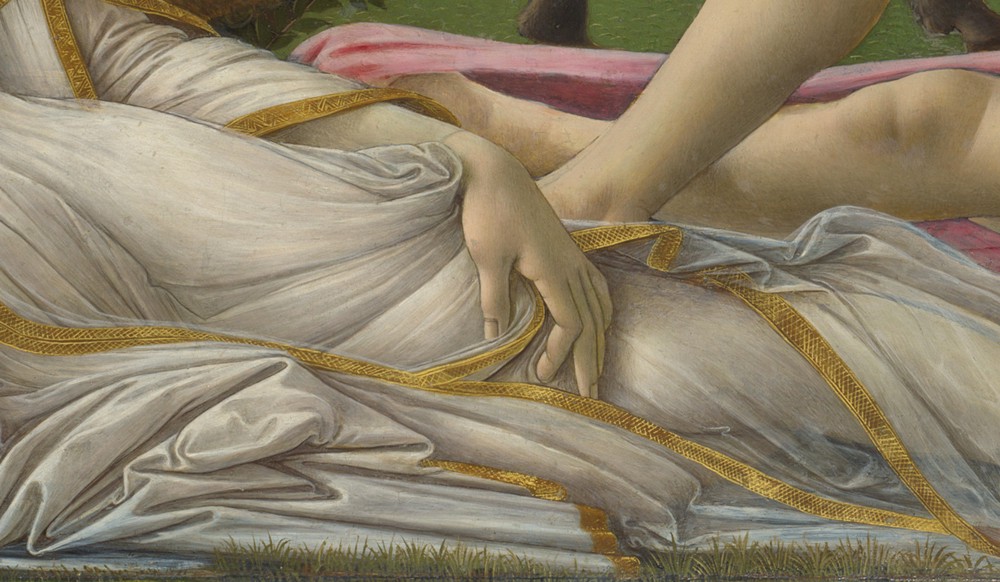 Detail of ?Venus and Mars? (c 1485) by Sandro Botticelli. Tempera and oil on poplar panel, 69 cm x 173 cm. National Gallery, London. Source Wikimedia Commons
Detail of ?Venus and Mars? (c 1485) by Sandro Botticelli. Tempera and oil on poplar panel, 69 cm x 173 cm. National Gallery, London. Source Wikimedia Commons
Tellingly, the fingers of her left hand still toy suggestively with her gown, which folds in translucent layers and is edged by an elaborate golden hem. He is worn through; she is still wide awake. In fact, he is so deep in his slumber that he does not wake even when a conch shell is blown like a horn into his ear. His militant virility has turned dulcet; he is just a boy after all, once his armour ? the costume of his barbarism ? has been spirited away.
Botticelli, an artist who was keen to draw on the classical themes explored by Humanist scholars, has also produced an image of lucid psychological subtly.
 Venus and Mars (c 1485) by Sandro Botticelli. Tempera and oil on poplar panel, 69 cm x 173 cm. National Gallery, London. Source Wikimedia Commons
Venus and Mars (c 1485) by Sandro Botticelli. Tempera and oil on poplar panel, 69 cm x 173 cm. National Gallery, London. Source Wikimedia Commons
Would you like to get?
?A free guide to the Essential Styles in Western Art History, plus updates and news about me and my writing? Get it all here.
Christopher P Jones is a writer and artist. He blogs about culture, art and life at his website.
